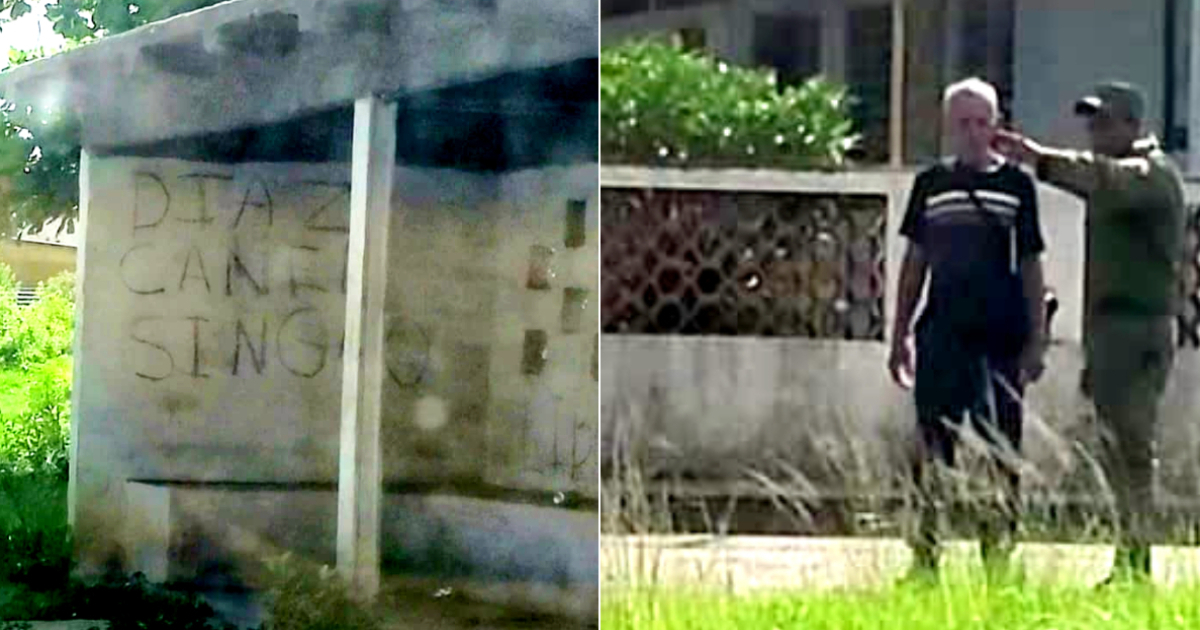Recently, a series of posters denouncing Cuban leader Miguel Díaz-Canel and the communist regime have surfaced in Santa Fe, located on the Isle of Youth, marking an unprecedented event in this area. The graffiti appeared on prominent structures such as the walls of the “Florecita de Azahar” child care center and a bus stop across from this educational facility, according to reports and photos submitted to CiberCuba.
The slogans include phrases like “Díaz-Canel singao,” “Down with communism,” “Homeland and Life,” and “Freedom,” echoing the social unrest that gained momentum following the popular uprising on July 11, 2021 (11J). Residents in the vicinity reported seeing at least four distinct graffiti, which suggests a deliberate, possibly coordinated protest rather than an isolated incident.
These public expressions of discontent arise amidst a severe energy crisis that has, for the first time, subjected the Isle of Youth to power outages lasting up to five continuous hours and electricity rationing cycles, significantly disrupting daily life. Although the Isle of Youth had previously managed to avoid the national blackout scheme due to its electrical autonomy, as recently reported by CiberCuba, it has been experiencing power cuts similar to the rest of the nation since June, leading to an increasingly visible public dissatisfaction.
In a territory historically under strict political control, these protests are significant. In 2021, a young man was arrested for inscribing “Down with the dictatorship” on a wall in the same region. A year later, in 2022, several dissenters were penalized for protesting on 11J, illustrating the local authorities' repressive response to any signs of opposition.
The content of the current messages, their placement in public spaces such as a childcare center and a transport stop, and the timing of their appearance indicate a turning point in the social sentiment on the Isle. The deterioration of living conditions due to the energy and economic crisis seems to have finally outweighed the fear of reprisal.
As of now, there have been no reports of arrests or official reactions following the emergence of these posters, although it is common for authorities to swiftly remove such graffiti and increase surveillance in affected areas, as has been seen in other provinces. These developments underscore that the climate of social dissatisfaction is spreading even in traditionally more controlled regions and that the system's crisis is not only structural but also symbolic: even the walls of nursery schools are no longer immune to public outcry.
Understanding the Social Unrest in Cuba
What sparked the recent graffiti protests in the Isle of Youth?
The protests were sparked by widespread dissatisfaction with the current regime, exacerbated by severe power outages and economic hardships, leading residents to express their discontent publicly.
How have the authorities responded to these expressions of dissent?
While there have been no immediate reports of arrests or official responses, it is common for authorities to quickly remove graffiti and increase area surveillance, as has been the practice in other parts of Cuba.
What is the significance of the locations chosen for the graffiti?
The choice of locations, such as a childcare center and a bus stop, highlights a strategic effort to gain visibility and underscores the urgency and boldness of the protestors' message in traditionally controlled environments.
